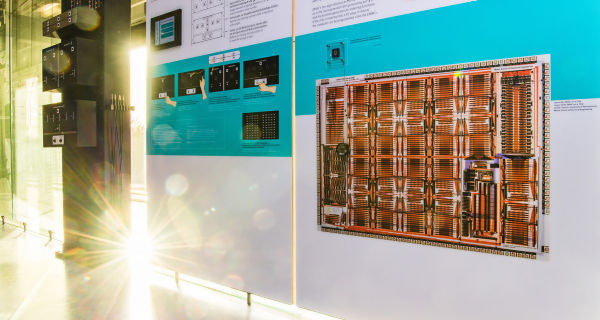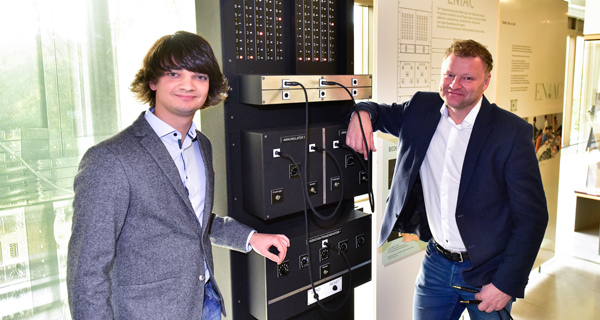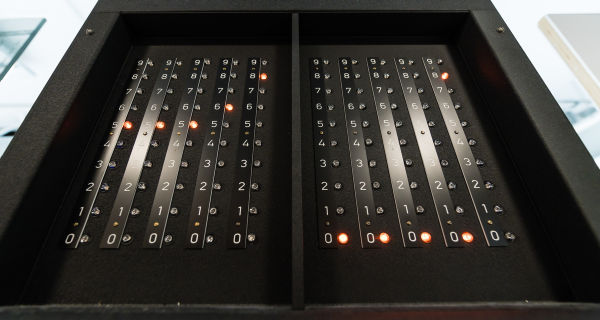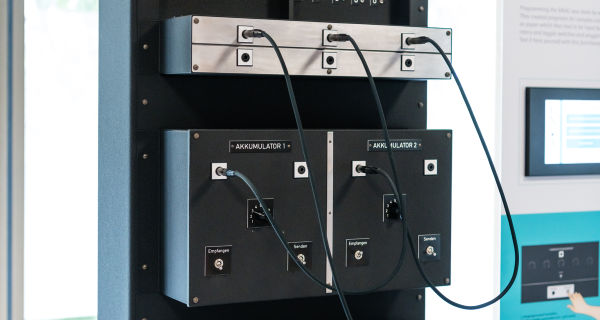The functional facsimile of the ENIAC module built by the HNF won the Tony Sale Award in 2016 in London. The award was presented to honour this exceptional reconstruction, a model that demonstrates the operation of the first electronic computer ENIAC from 1946 in a manner that non-experts can understand.
The ENIAC was the size of a room and was programmed via cable and control dials – a time-consuming task that was carried out primarily by women. For the exhibition “IT began with Ada. Women in Computer History” that the HNF presented in 2015/16, the museum staff, led by the HNF’s Managing Director, Dr Jochen Viehoff, constructed a functioning input panel that is easy to operate and shows museum visitors just how this early computer was programmed.
Programming as manual labour
Professor Martin Campbell-Kelly, a highly respected computer historian and the chair of the jury, praised the work of the museum when the award was presented in London: “The HNF reconstruction captured the essence of the landmark ENIAC computer. The execution of the ideas produced an artefact that is robust and ideal for a hands-on museum display to demonstrate the physicality of early computer programming.” In the 1940s, the ENIAC was a computer that only experts could operate. Today, visitors to the HNF can try out an addition to it as well as the calculation of Fibonacci numbers.
The facsimile was first used in the special exhibition titled “IT began with Ada”, which is now part of the HNF’s permanent exhibition. Visitors will find it with the ENIAC, where a number of the computer’s original components are exhibited as well.
Glow lamps and wrinkle finish
Dr Jochen Viehoff, the Managing Director of the HNF, and Johannes Blobel accepted the award in London. Blobel is an employee of the Heinz Nixdorf Institute at the University of Paderborn. He oversaw the programming of the reconstruction. Rainer Glaschick, an adviser to the HNF, devised the fundamentals of the installation. Bernhard Fromme, the museum’s restorer, used glow lamps and a wrinkle finish to make sure that the facsimile lives up to its name. Gregor Golombek of the HNF was responsible for the electronic circuitry.
The Tony Sale Award has been presented every two years since 2012 by the British Computer Conservation Society for the best reconstruction of an historic computer. It is named for Tony Sale (1931-2011), who made a name for himself by building a fully functioning facsimile of the Colossus, a computer that was used in World War II to crack the code of German radio messages. Sale also was a founder of the National Museum of Computing in Bletchley Park, England.



